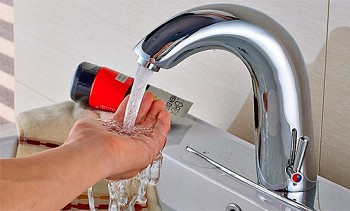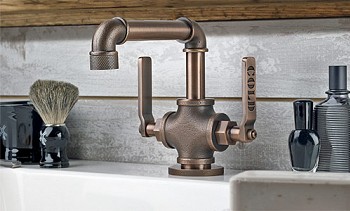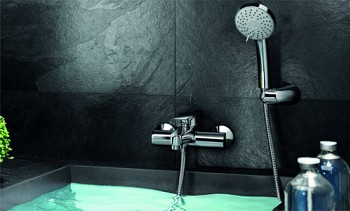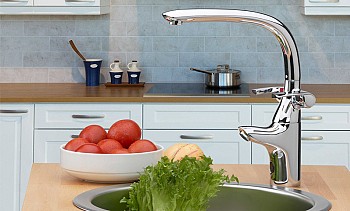Modern types of mixers and their distinctive features
The first hot and cold water faucet was invented by Lord Kelvin back in the nineteenth century. New materials and technologies have allowed to create more advanced devices, aesthetic and convenient. In this material we will consider all types of mixers that are currently used.
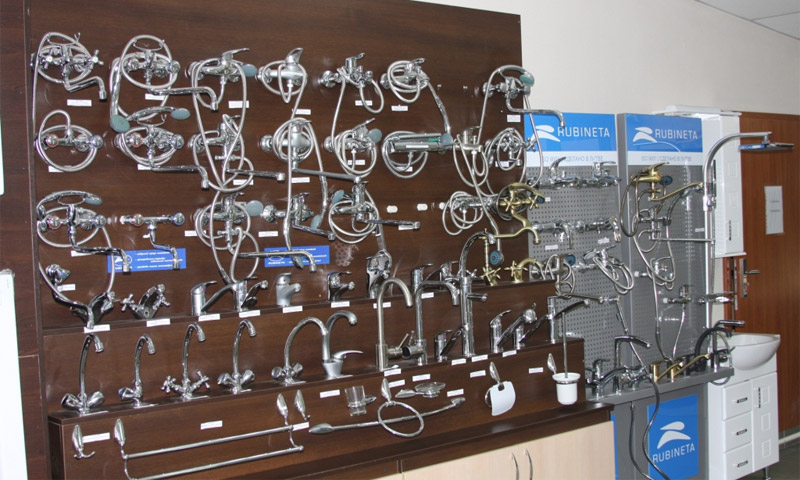
Content:
Washbasin faucets
Here you need to take into account the width and depth of the sink, choosing a mixer so that the water does not spray outside. It depends on the height of the product, as well as on the size and shape of the spout.
It is also important how the device is attached to the sink. It is better if a nut serves for this, which must be screwed onto the lower part of the housing. Fastening with studs (one or two) is less reliable. According to the method of switching water, products can be either valve or lever. About each of these types of faucets for sinks - hereinafter.
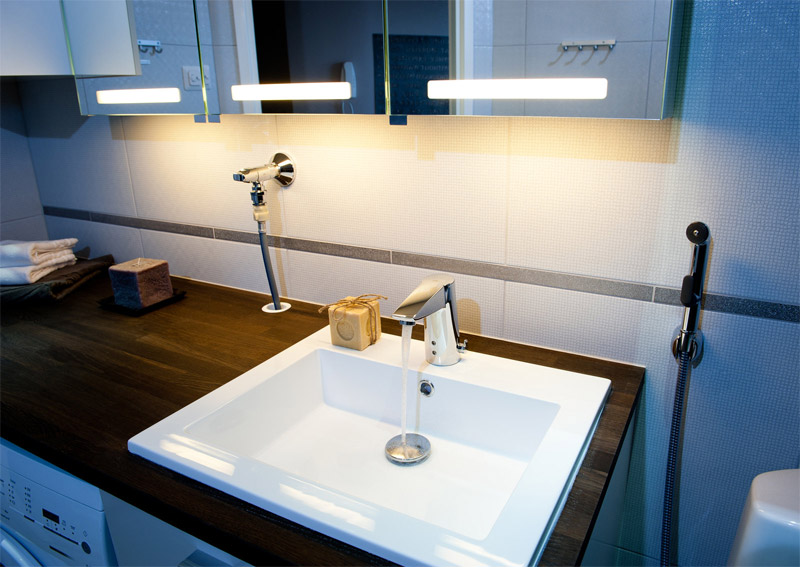
Washbasin faucet-box mixers
In this mixer, rotating the knobs located on the sides of the faucet, you can change the pressure of hot or cold water, achieving the desired temperature. These models are also called axlebox cranes, since it is the axleboxes that serve here as locking elements.
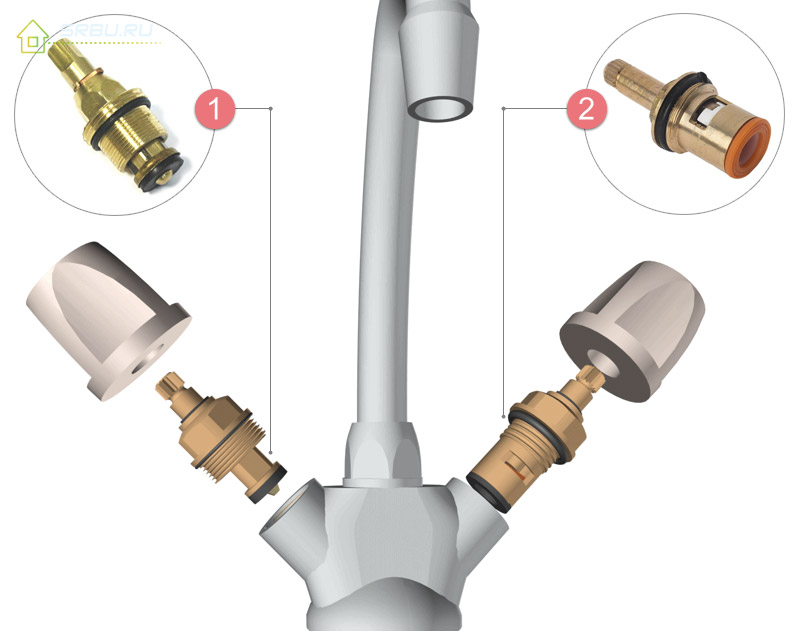
Crane axles can be:
1. Worm-type crane - it's a kind of cork. A stem with a rubber gasket at the end blocks the water (either fully or partially). Turning the crane with such a mechanism, you need to make several revolutions and make an effort at the end. By the way, imported products act more gently on gaskets than domestic ones: in them the movement of the rod is progressive, and not rotational.
2. Crane with rotary ceramic platesin which holes are cut. When the holes coincide, the water flows, when they do not match, it stops flowing. Fully wrap the faucet with ceramics inside can only be half a turn. Therefore, it bears a second name - half-turn.
Note the advantages and disadvantages of crane-box mixers.

+ Pros:
- The molded case is durable and reliable, it does not have a large number of moving elements.
- The interchangeability of parts is high, and the repair is not difficult.
- Fairly low price (lower than single lever products).

- Minuses:
- Crane axles are too diverse - you can make a mistake and buy the wrong part that you need. And sometimes you can’t find it for sale.
- You need to twist the cranes with two hands - this is a long time. And uncomfortable if the hands are not very clean.
- A lot of water is consumed - for a careful owner this is important.
Single lever basin mixer
Single-grip (or single-lever) mixers, instead of two valves, have only one lever handle. It is able to rotate in two planes, providing the necessary heating and water pressure.
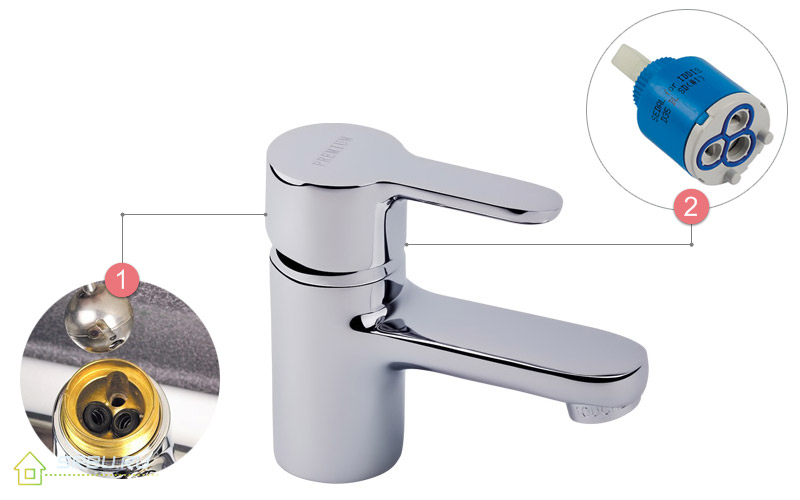
The mechanism for switching can be:
1. Ball - inside is a hollow ball with holes.
2. Cartridge, inside it are rotary disks made of ceramics.
Note that the tightly fitting parts inside the case react painfully to foreign inclusions in the water. Because of this, the mixer may fail - even an accidentally caught grain of sand can damage the discs. To prevent this, set filters. The single lever mixer housing can be swivel or cast.
Features of the rotary housing
In this case, after fixing the device to the sink, its spout can be rotated. It is quite convenient. For example, when you need to direct the tap not into the sink, but into the bath.Yes, and wash the sink becomes easier.
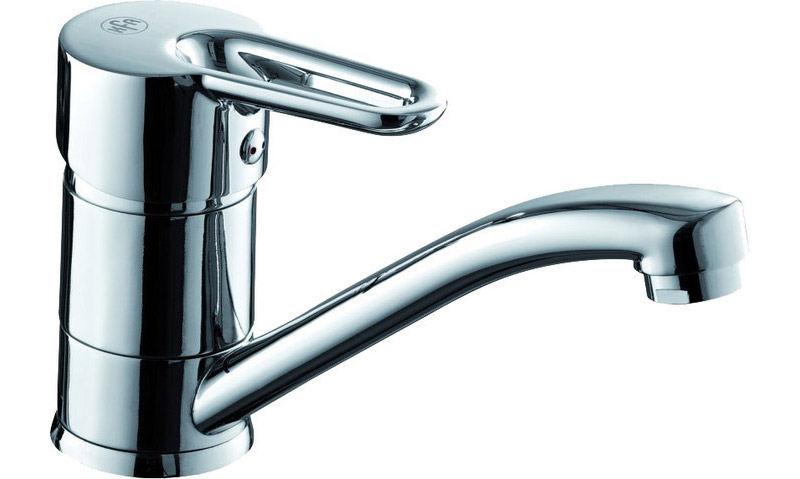

+ Pros:
- Ease of use (the lever can be pressed in one motion) and quick adjustment.
- And the surface of the mixer gets dirty to a minimum. If your hands are dirty, you can use the back of your hand or elbow.
- Longer (somewhere twice) service life than that of a crane-axle box. It is about ten years old. The prices of these parts are on the same level, but when repairing, you will need one cartridge, and two crane cranes.

- Minuses:
- The mobile case cannot shine with special durability and can easily break.
- If the gasket that separates the inside from the swivel is worn out, the tap needs to be completely replaced. This detail is extremely difficult to find.
- Sensitivity to pollution in water.
Features of molded case
The fewer moving parts, the less often the finished product breaks. This is an axiom, so a solid one-piece case will probably live longer than a rotary one. The only part that can be changed is a rigidly fixed spout. However, this design allows you to place the shift knob only on top. And this is not very convenient.
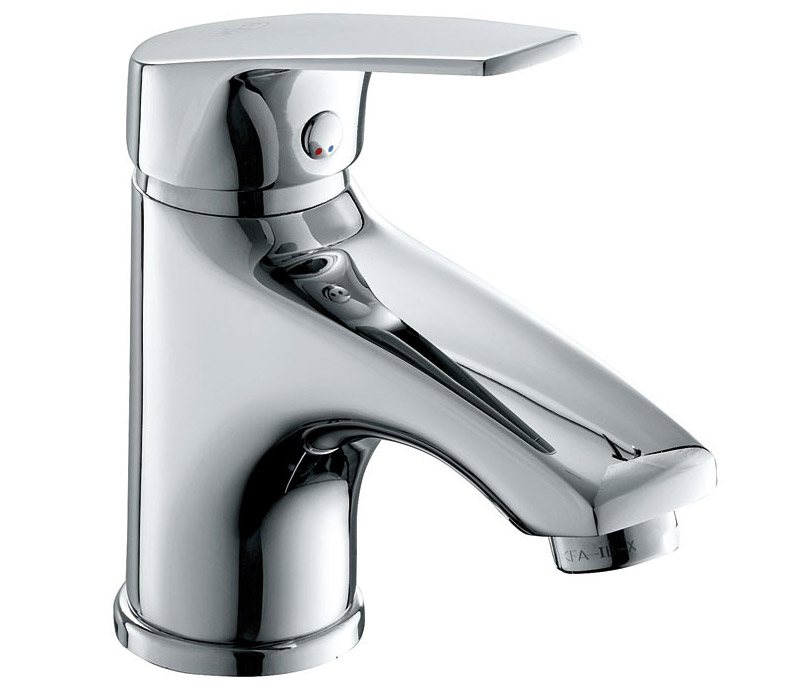

+ Pros:
- Long living housing with easily replaceable elements.
- All the advantages of single lever products described above.

- Minuses:
Cast faucets are taller, so water is often sprayed from them.
The side handle is not too comfortable.
As with all cartridge products, sensitivity to foreign particles in the water.
Kitchen faucets
By design, the types of faucets for the kitchen are similar to those designed for sinks in the bathroom. But they have one feature. Products installed in a kitchen sink must have a sufficient height. Otherwise, it will not be possible to conveniently wash large pots or draw water into them. Still sometimes kitchen appliances are equipped with a dispenser and a separate tap for drinking water.
A long spout and a swivel design (allowing access to all corners of the sink) is the best option. The larger the swivel angle, the more comfortable it is to use the device. Budget models have an angle of not more than 140 degrees, more expensive - 180 degrees. Sometimes the spout is made flexible or extendable for greater comfort.
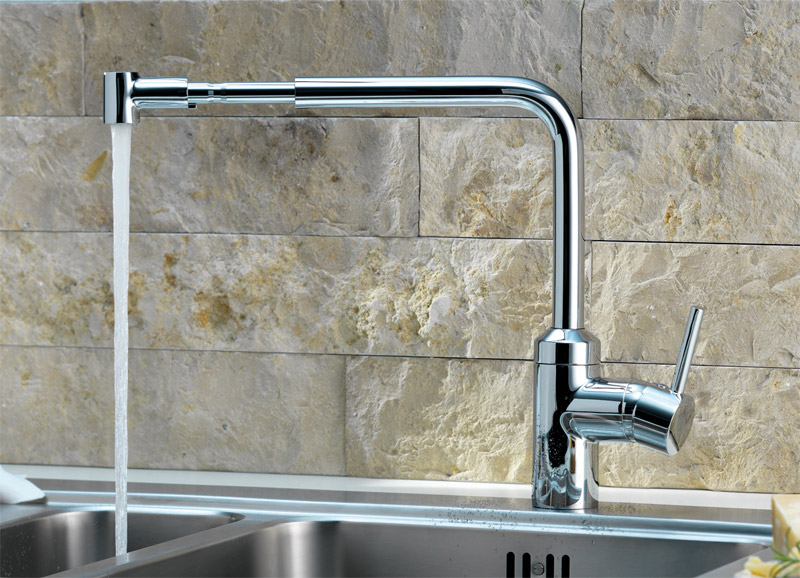
Kitchen faucets
The classic version with two flywheels is not very difficult to repair - any locksmith can handle it. However, if the mistress’s hands are in dough or in oil, then the taps will inevitably get dirty - otherwise you won’t open them. And the water decently flows through such a mixer. In general, the pros and cons are the same as for the devices described in the previous section.
Single lever kitchen faucets
Included at the touch of a finger or the back of the hand, they are not afraid of dirty hands and are very relevant during cooking. Therefore, “one-armed” faucets appear in an increasing number of kitchens, displacing valve taps from there. Their body can be solid or consisting of rotary parts.
Swivel housing - convenience and practicality
This design makes it easy to wash the soiled sink, as it supplies water to the maximum area. Or put a mountain of dirty dishes by moving the crane aside. This, of course, is a plus.
But let's not forget about the shortcomings of the rotating body. They are already listed in the product description for the sink. This is a reduction in the service life and rather quick wear of parts subjected to friction. And in the kitchen, this factor is especially important, since the mixer experiences higher loads than in the bathroom.
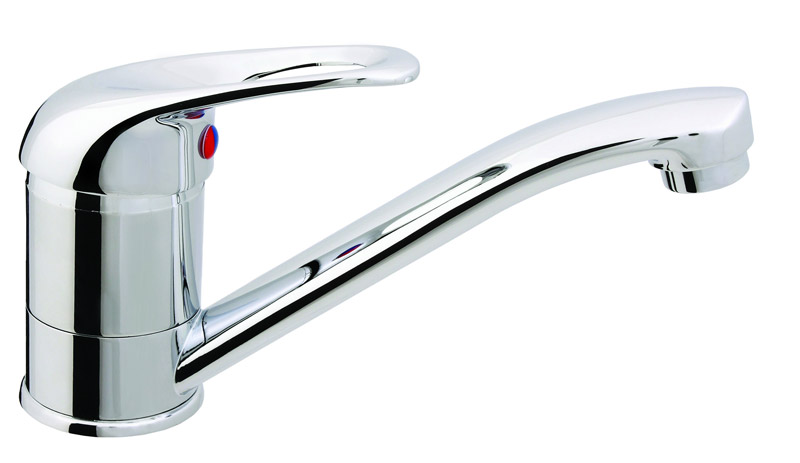
Cast housing - a guarantee of durability
Perhaps the one-piece housing is most suitable for tense kitchen conditions. Such a mixer model faithfully lasts for many years. Unless cartridge spouts will have to be replaced periodically. And so that water does not spray out from a high spout, its stream should be directed in the center of the sink.
The only drawback is the lateral placement of the handle, which was already mentioned in the previous section. But here you already need to choose which is more important: reliability or comfort.
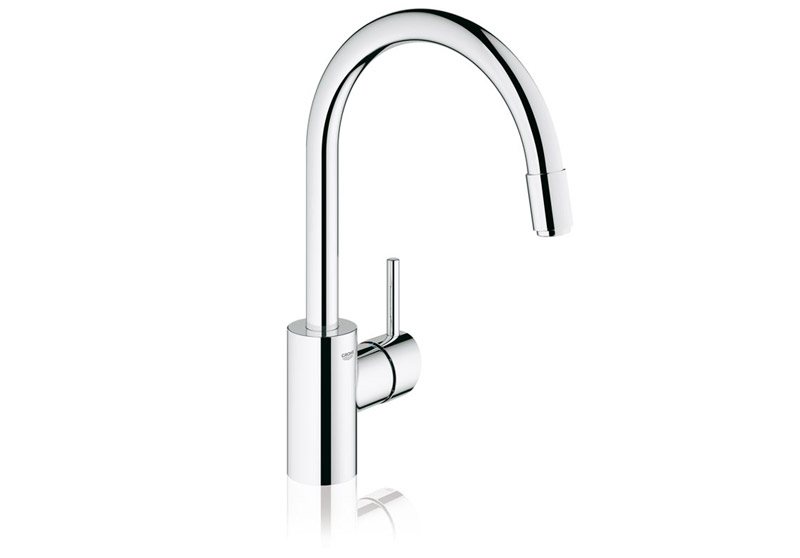
Bath faucets with shower
These types of bathroom faucets require an additional outlet where the shower hose is connected. In addition, they have a mechanism that switches water at the right time to a tap or shower.
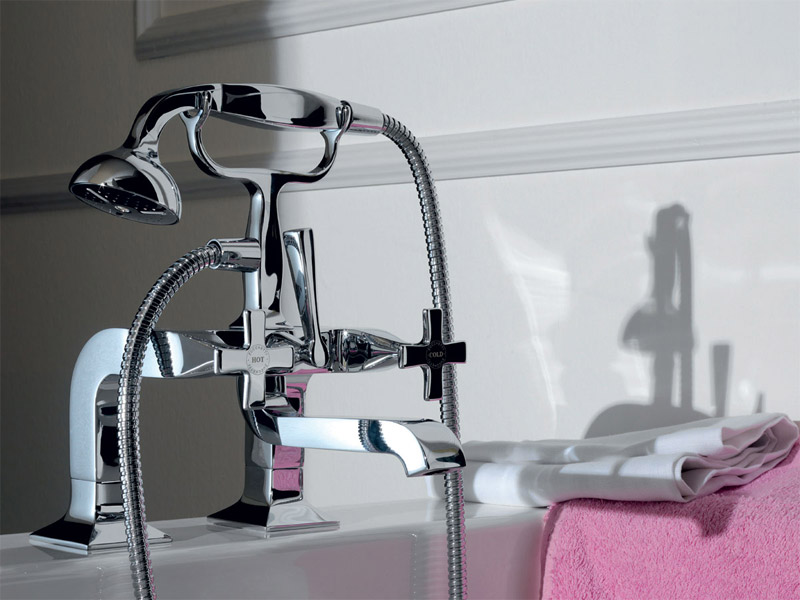
Faucet-box mixers for bath with shower and their variations
Like faucets mounted above the sink, these devices have two valves and a one-piece housing. But the mechanisms that switch the shower - spout, they can be different, it is precisely by this mechanism that they differ.
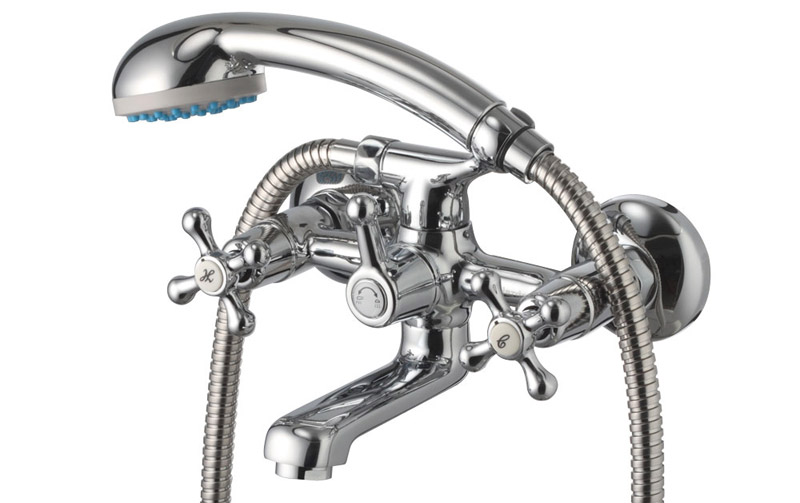
1. Faucets with eccentric shower gear - spout.
Such a device is most common. Its principle is this: by turning the knob of the switch, we actuate the rod, on both sides of which are rubber stoppers-gaskets. This rod, moving in a straight line, closes as a result one of the holes: for the shower or for spout.
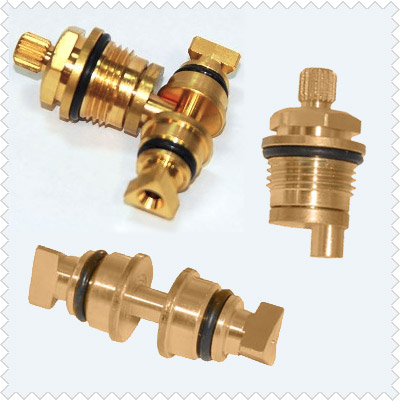
+ Pros:
- Repair of the mechanism is usually simple - just change the gasket.
- Minuses:
- Rubber gaskets wear out quickly.
- When more serious parts fail, you have to change the mechanism completely. But this is a laborious work, besides, you have to disassemble the entire mixer.
- It is extremely difficult to find the mechanism separately for sale.
2. Faucet with cartridge shower switch - spout.
Structurally, the device is similar to a cartridge for a lever mixer, but it is smaller in size. It works the same way: ceramic plates, I turn, pass or close the water.
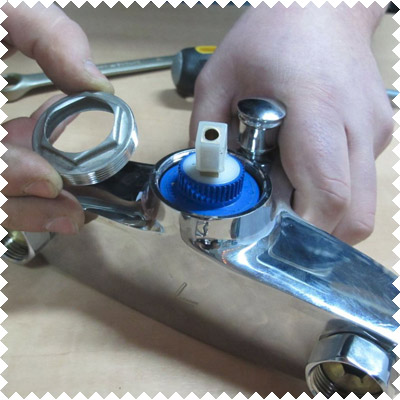
+ Pros:
- He is able to serve for a long time, without breaking.
- Changing it is much easier than a device with an eccentric.
- Minuses:
- The cartridge cannot be repaired - it changes completely.
3. Faucet with ball-mounted shower gear - spout.
There is a small ball valve. Inside it is a brass ball in which perpendicular holes are machined. When turning the switch, the ball occupies one of the fixed positions, and water flows through the corresponding holes.
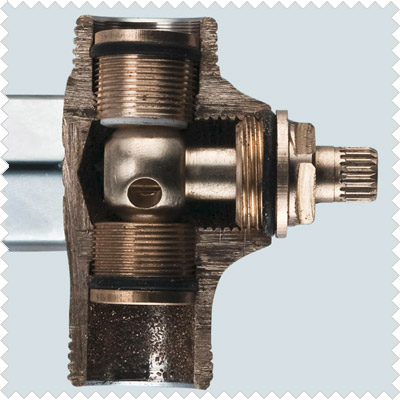
+ Pros:
- This model is the most tenacious and reliable.
- Minuses:
- If, nevertheless, the mechanism breaks, then changing it will not work. Have to buy a new mixer.
Single lever bath mixers with shower
Here, the design is similar to the lever mixers described above. The only thing - the case of the bath-shower devices is always cast. They differ in the type of switching mechanism from spout to shower.
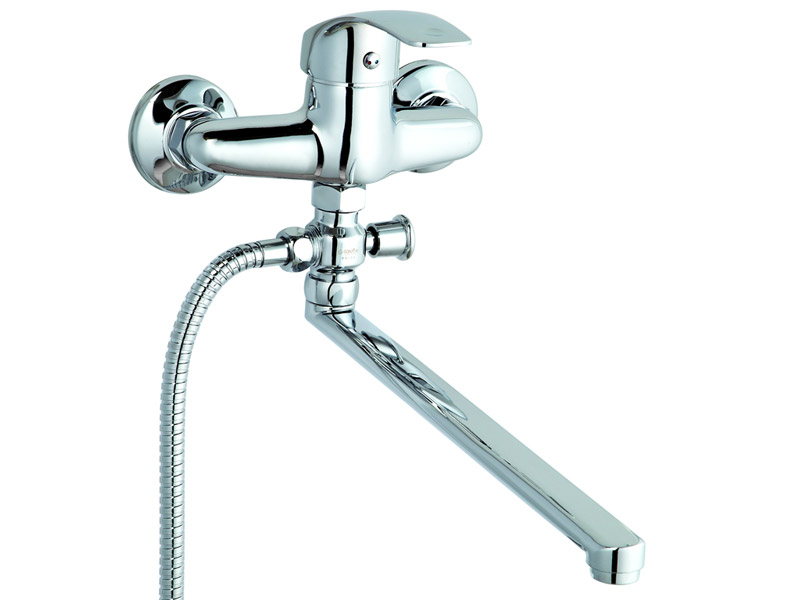
1. Faucet witho removable shower switching mechanism - spout.
It can be cork or rotary. The latter option is more convenient and modern. If the mechanism stops working, you need to remove it and put in a new one. Dismantling by design is not provided.
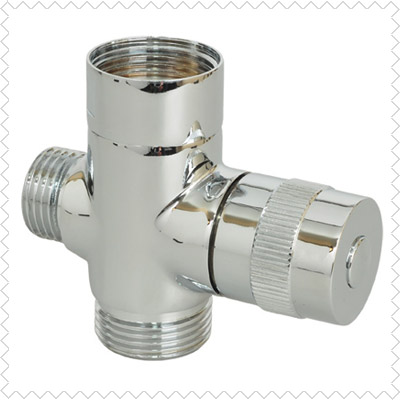
+ Pros:
- These removable items are available in all stores. So repairing the mixer is not difficult.
- Minuses:
- The dimensions of the mechanism are solid, and it requires an additional place in the lower part of the mixer.
- When the spout is turned back and forth, the joints loosen.
2. With integrated cork shower - spout.
As in the eccentric device, there is a rod with rubber plugs (which is why the mechanism got its name). For the stem to begin to move, you need to pull the handle of the switch toward you or press it.
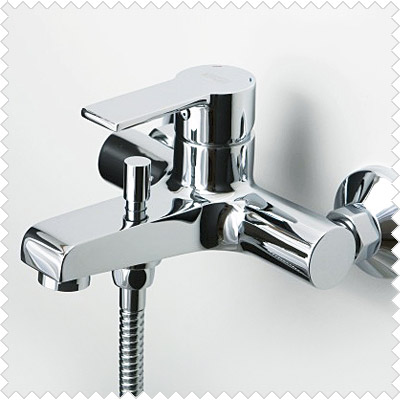
+ Pros:
- Small dimensions due to the integrated design.
- Attractive design.
- Minuses:
- Sometimes the mechanism switches on its own.
- Repair is extremely difficult, parts are not available.
3. Mixer with integrated cartridge shower switch - spout.
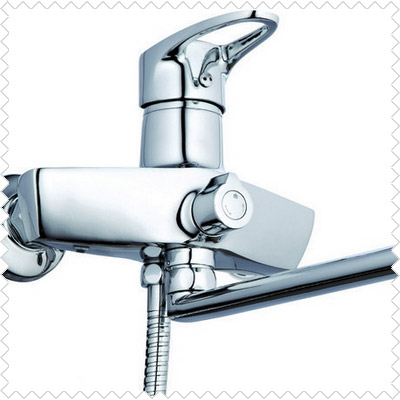
+ Pros:
- This type of switch is considered the most reliable;
- Simple device replacement procedure.
- Minuses:
- The cartridge cannot be repaired; if it breaks, it will have to be replaced completely.
Thermostatic faucets
Equipped with two handles with fuses, they allow you to quickly vary the temperature (regulated by the first valve) and pressure (regulated by the second valve). The limit buttons on the handles make it possible to set the parameters that are needed. Next time, turning on the tap, we get water with the desired temperature and pressure.
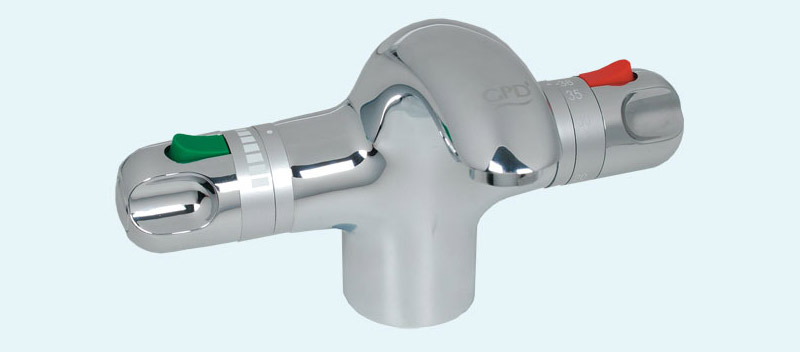

+ Pros:
- Water saving, fastest adjustment.
- An opportunity to set the necessary parameters. This is convenient, for example, when bathing a child.
- Modern elegant design.

- Minuses:
- High price.
Mixers with sensor
These products are also called non-contact. They do not need to be turned on manually, as they are equipped with an infrared type motion sensor. When you bring your hands to the tap, water begins to pour out of it. The range of the sensor can be adjusted. The temperature is set by a small lever.
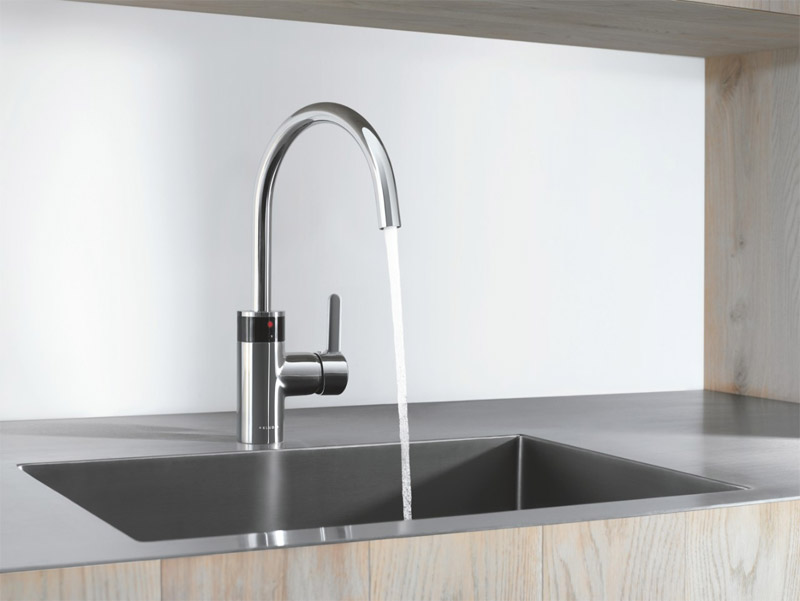

+ Pros:
- Hygiene - there is no direct contact of the surface with dirty hands. It is convenient for public bathrooms.
- Ease of use - no effort is required.

- Minuses:
- Price level.
Difference of mixers at the installation site
Embedded Products
As a rule, they come complete with an expensive bathroom and are built into its board with special fasteners. There are also models designed for attachment to a side table.
Central products
They are placed vertically, used for installation on a sink or kitchen sink. Their installation and maintenance are quite simple.
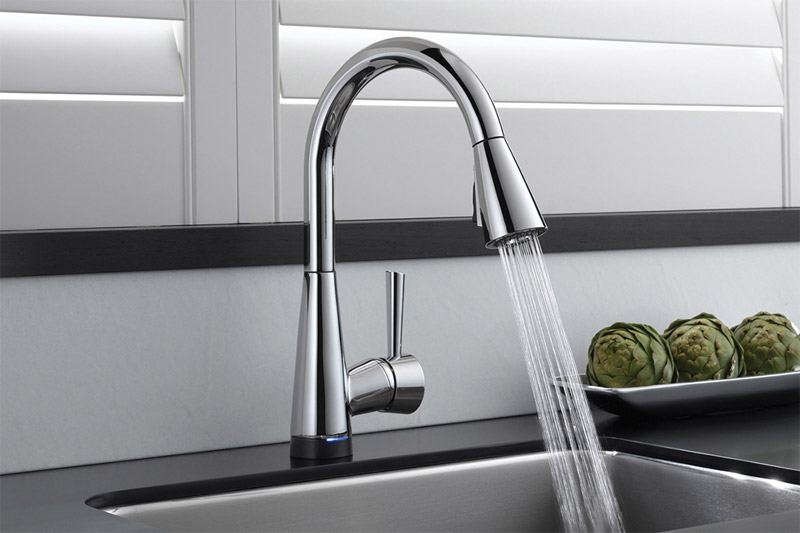
Wall products
These are, as a rule, bath and shower products, which are distinguished by rigid installation. They are mounted near the plumbing, hiding the fasteners under the cladding. Sometimes they are installed in a specially made niche in the wall.
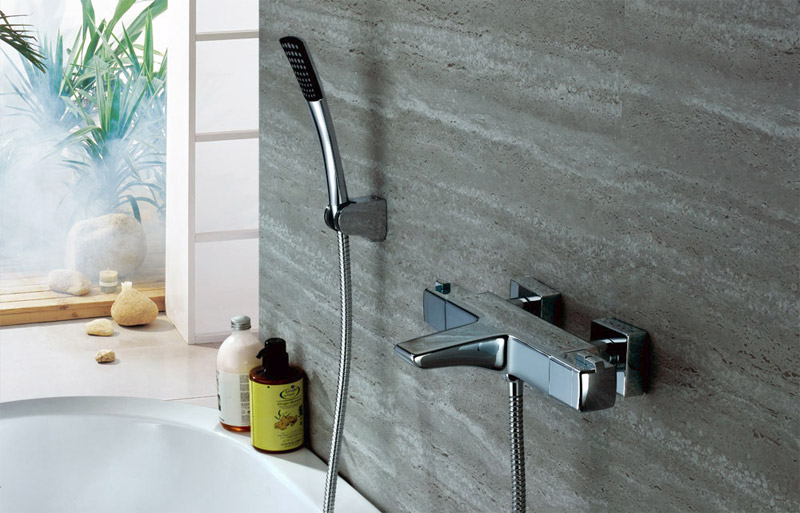
Difference of mixers by types of spout
Short spout
A small spout (from 15 to 18 centimeters) can be suitable for a compact sink in the bathroom, or for a bath-shower faucet.
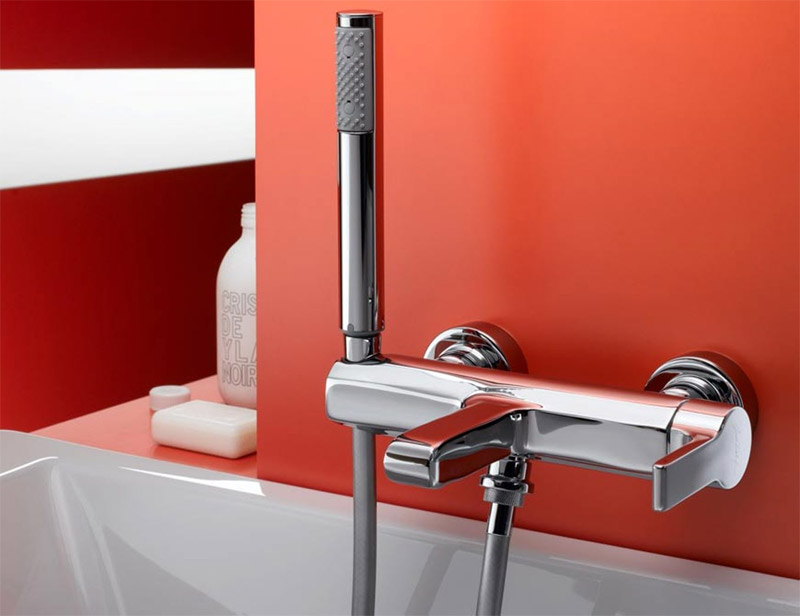
Long spout
The size of this product is from 20 centimeters or more. It can come in handy in the kitchen, as it gives more space to wash your hands or dishes. A spout of more than 30 centimeters is needed if there is one common mixer for the sink and bath.
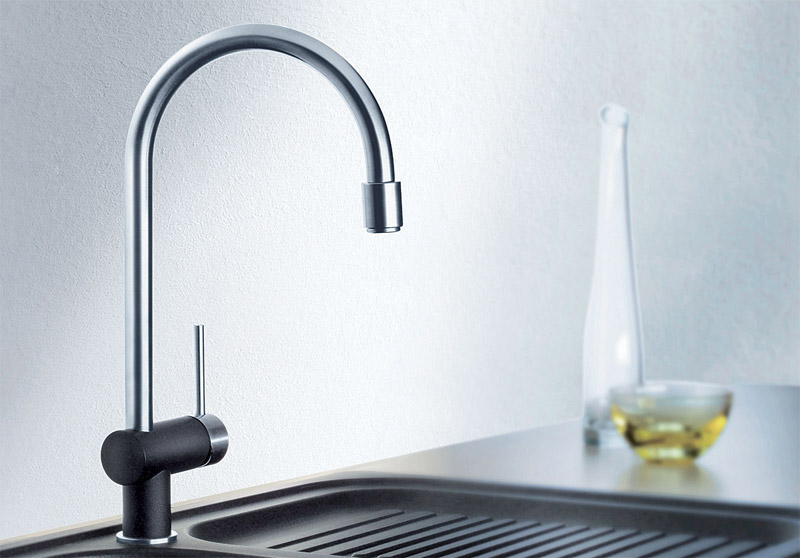
Flexible spout
Also relevant for kitchen conditions. Outwardly, he is no different from his brothers. But if you pull on its end, you can extend the flexible hose up to 70 centimeters long. It helps to wash dishes, dishes, fruits and vegetables.
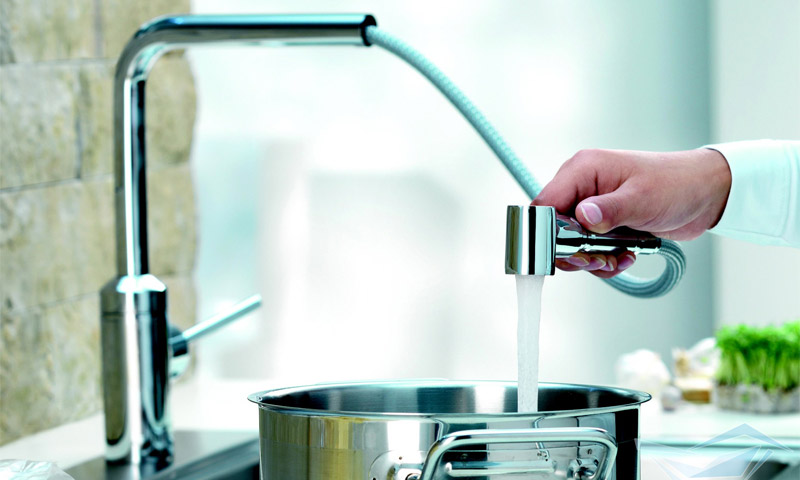
Kitchen faucet with a flexible pull-out spout.
Mixers depending on the material of manufacture
Brass and bronze
These are optimal and most durable materials. But they are expensive. As a rule, the surface of brass mixers is nickelized and chrome plated. It turns out practical and hygienic. You should beware of products made of silumin, a little like brass. They are cheaper, but serve two years, no more.
Stainless steel
A good option, more budget than bronze with brass, although not so durable. It is practical, beautiful and modern, and any mixer is suitable for any design.
Ceramics
Ceramics look stylish, and products made of it are particularly original. Often they are even made in the form of fountains. However, the fragility of this material can play a cruel joke. In addition, ceramic faucets are the most expensive.

